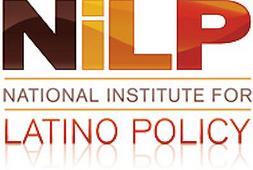
A Socioeconomic Profile of Latinos in New York State
By Angelo Falcón
The NiLP Report
With the convening this year of 29th Annual Somos El Futuro statewide Latino conference on March 18-21 in Albany, New York, the National Institute for Latino Policy (NiLP) thought that a review of the current socioeconomic status of New York State's 3.5 million Latinos would be timely. In this NiLP Latino Datanote we present selected Census statistics on the state's Latinos, focusing on the five largest Latino national-origin groups: Puerto Ricans, Dominicans, Mexicans, Ecuadorians and Colombians.
According to the Census Bureau's 2014 American Community Survey, there were 3,670,289 Latinos in New York State, making up 18.6 percent of its total population. This population is one of the fastest-goring (21.2 percent growth in 2005-14) and youngest in the state with a median age of 31.9 years compared to 38.2 for the state as a whole. Latinos in New York State have an aggregate annual income of $68.5 billion. Close to a third of Latinos are Puerto Rican (29.9 percent), followed by Dominicans (22.0 percent), Mexicans (13.5 percent), Ecuadorians (7.6 percent), and Colombians (4.3 percent).
Latinos, however, face many challenges as a community. This includes:
- A family poverty rate (24.1 percent) double that of the state as whole (12.2 percent)
- More than double the statewide rate of persons living in overcrowded housing (13.1 percent of Latinos versus 5.0 percent for the state as a whole)
- A higher percentage of Latinos pay 30 percent or more of their income for rent that the state as a whole (62.2 percent of Latinos compared to 54.7 percent statewide).
- More than double the statewide percentage of adults without a high school diploma are Latinos (33.0 percent) compared to 14.3 percent for the state as whole.
The statistics provide a more complete picture of the status of Latinos in New York State. It also highlights the specific conditions experienced by each of the five largest national-origin groups that make up this diverse Latino population. Please note that the American Community Survey is a sample survey and the statiustics below are all estimates with margins of error assumed.
